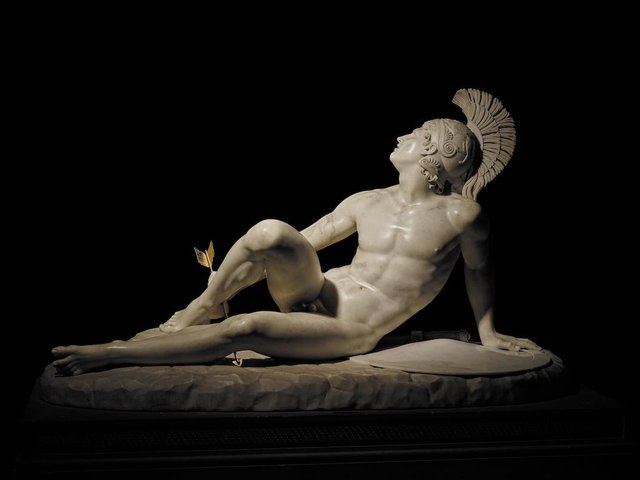Few archaeological stories have excited the public imagination recently more than the announcement that Western archaeologists and museum curators were to be allowed to view the so-called “Priam’s treasure” in the Pushkin Museum, Moscow (see The Art Newspaper, No. 42, November 1994, p.1).
The treasure comprises around 200 gold, silver and bronze objects excavated from Troy by the German archaeologist Heinrich Schliemann 121 years ago. Its recent history is now well known: installed in the Berlin Museum für Vor- und Früh-geschichte by the early years of this century, it was siezed by the Red Army the end of World War II. It was only last year that the Russian authorities confirmed its existence.
In early November a group comprising Dr Klaus Goldmann, curator at the Museum für Vor- und Frühgeschichte, his director Professor W. Menghin, and one of the museum’s conservators, were the first to be allowed in. Then followed visits by archaeologists from the universities of Tübingen (who are heading the present day excavations in Troy), Istanbul, Bryn Mawr College, Philadelphia, and the director-designate of the British School of Archaeology at Ankara, Donald Easton.
One of the most interesting aspects of this event is the possibility of new scientific techniques being applied to the gold objects, which, fortunately, do not appear to have been polished or comprehensively cleaned since they were discovered. Around one-quarter of the items appear to retain small traces of the original red earth of Troy.
The possibility of an international scientific committee is now being mooted, while specific offers of help have been made by one of the leading institutions in the field of forensic archaeology, Bradford University’s Department of Archaeological Sciences. Bradford ranks with the Smithsonian, Tokyo and Philadelphia as an archaeological science institution with a wide range of equipment and expertise. Speaking to The Art Newspaper, senior Bradford lecturer Dr Terry O’Connor said, “We are telling the Pushkin Museum that we would be delighted to assist them in a research programme using the latest scientific techniques to extract new information from the treasure”.
According to Dr O’Connor and other archaeological scientists, a number of new techniques could cast startling new light on the use of the vessels, and even on the people who used them. They include:
Gas chromotography. This would stand a reasonable chance of revealing whether the bowls and cups once held milk, olive oil or animal fat.
High performance liquid chromotography. This might show whether vessels were used for aromatic herbs, for example. In some cases one-millionth of a gramme of a particular carbon compound can indicate what a cup or bowl was used for.
Pollen analysis of any remaining grains contained in the earth residues. This could indicate function, specifically if vessels were used for carrying honey or poorly processed wine.
Tiny blood stains (perhaps from temple sacrifices) would theoretically be detectable, using a new haemoglobin testing technique called ELISA.
Microscopic examination of earth on the objects could produce tiny traces of charred plant material; another hint as to possible use.
The jewellery which forms part of the hoard could also yield clues. A technique known as use-ware analysis may enable scientists to determine what sort of textiles Trojan clothes were made of. Different types of textile: wool, linen or silk, for instance, are believed to produce different microscopic patterns on gold.
Finger-print analysis may be used to try to obtain clues as to the ethnic identity of the ancient priest kings who ruled Troy. Finger-prints are sometimes preserved within ancient corrosion on silver or bronze, and if several prints were discovered they could yield clues as to probable ethnic identity. Particular finger-print traits occur with different frequencies in different races.
Metallurgical examination, specifically trace metal analysis, would be likely to reveal where ancient Troy’s gold actually came from, a discovery which would shed light on the city’s trading patterns.
There are also theoretical possibilities of DNA work on the treasure if a micro-excavation of the nooks and crannies hidden under bronze corrosion (and archaeologists have confirmed that there is corrosion) produced even tiny fragments of human dandruff, then DNA genetic material may be extractable. This idea was noted for The Art Newspaper by Don Brothwell of York University who worked on Britain’s bog body, the Lindow Man. In the near future, even a tiny piece of hair could yield similar information.
Further information on Priam’s Treasure emerged in Russia in early November. A group of 414, mainly bronze, Trojan items from Schliemann’s excavations (including thirty items from Priam’s treasure) had also been hidden away in Russia, this time in St Petersburg. Like the gold and silver its whereabouts had been unknown since the last war. They have been seen by Donald Easton, Professor Manfred Korfmann of Tübingen University’s Insitute of pre-history and the American archaeologist Machteld Mellink of Bryn Mawr. It is hoped that this group will feature in any scientific examination of the treasure.
On the thorny question of restitution, Donald Easton, following his visit to Moscow and St Petersburg, said: “Now that the material is going to be studied and displayed, the question of who owns it and where it goes seems to me to be quite unimportant”.
Originally appeared in The Art Newspaper as 'Is there dandruff on Priam’s Treasure?'


